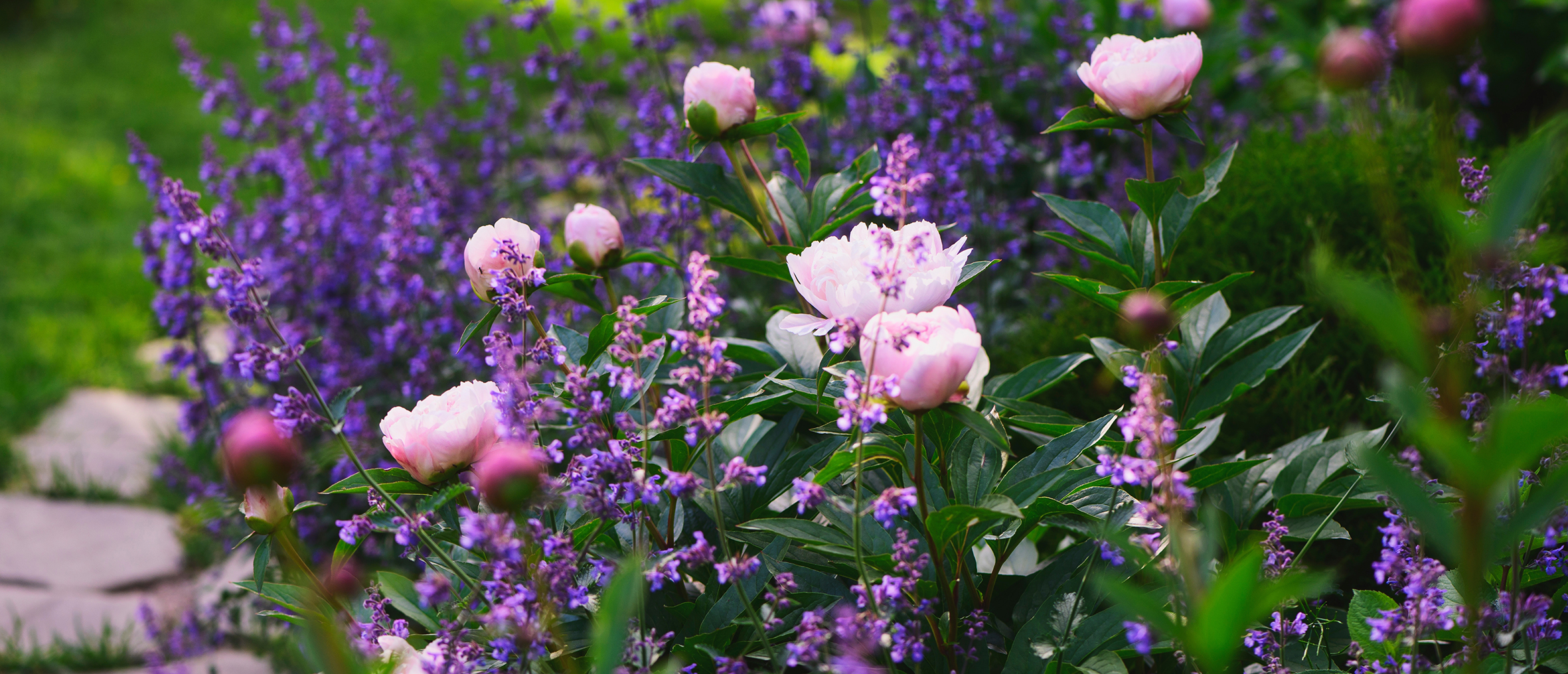Imagine a garden that bursts with color and life throughout the seasons, where bulbs and perennials intertwine to create a stunning display. You can achieve this dream garden by learning how to plant bulbs and perennials together, combining different types of bulbs with perennials, using layering techniques, and designing a layered garden that blooms from early spring to autumn. In this blog post, you’ll learn about various blooming bulbs, planting techniques, and care tips that will help you create a beautiful garden that lasts all year long.
Key Takeaways
- Create a stunning garden by pairing bulbs and perennials for all seasons.
- Prep soil, plant correctly, and provide regular care to keep your plants healthy & vibrant.
- Explore different garden styles like cottage, formal or wildlife friendly for inspiration!
Choosing the Right Bulbs and Perennials
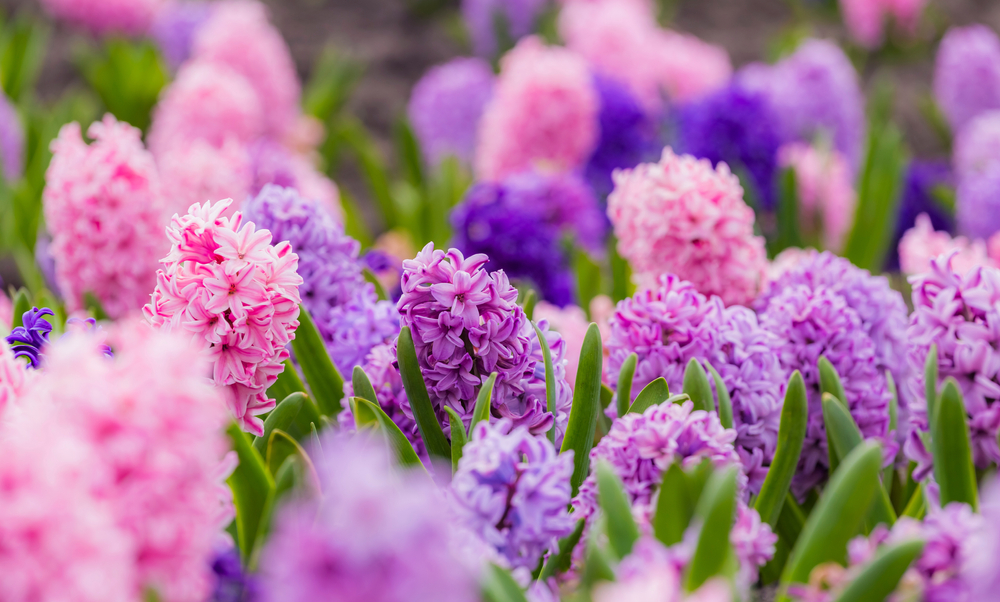
Creating a vibrant and harmonious display in your garden requires the right selection of bulbs and perennials. When you pick plants according to their blooming seasons, a continuous show of color throughout the year is guaranteed. Remember, bulbs aren’t restricted to empty beds or unplanted spaces; they can also thrive beautifully in partial shade. Companion plants, such as perennials that don’t grow too tall while bulbs are in bloom, can make a great addition to your garden and create a dynamic display.
There are three main blooming seasons to consider when selecting your bulbs and perennials: spring, summer, and fall. Each season offers a variety of plants with unique colors and textures that will transform your garden into a stunning visual feast.
Spring Blooming Bulbs
When it comes to planting spring bulbs, some popular spring blooming bulbs include:
- Tulips
- Miniature daffodils
- Hyacinths
- Crocuses
- Alliums
- Light blue flowers
Can create a vibrant and lively display when paired with perennials. Tulips, for example, produce gorgeous cup-shaped flowers in various colors and sizes, making them an excellent choice for a spring garden. Daffodils, with their bright yellow flowers, can be easily grown in various soil types and look stunning when paired with perennials that have silvery foliage.
Pairing spring-blooming bulbs with perennials requires thoughtful consideration of both plants’ size, color, and bloom time. Here are some tips to create a balanced and eye-catching display:
- Plant bulbs first, then fill in the gaps with perennials, such as ornamental grasses.
- Consider the height and spread of each plant to ensure they complement each other.
- Choose bulbs and perennials that bloom at different times to extend the flowering season.
- Regularly water and fertilize your plants to keep them healthy.
- Snip off spent blooms to encourage new growth and maintain the beauty of your spring garden.
Summer Blooming Bulbs
Summer-blooming bulbs, such as saucer shaped flowers:
- Allium
- Oriental Lily
- Begonia
- Freesia
- Gladiolus
- Polianthes tuberosa
- Crocosmia
- Bearded Iris
Can complement perennials for a stunning garden display. These bulbs bring vibrant colors and textures to your garden, and when mixed with perennials, can provide blooms all summer long. To ensure the health and beauty of your summer-blooming bulbs, plant them in free-draining soil, water them adequately, and place them in a sunny spot.
To create a continuous display, a keen understanding of the bloom times of summer-blooming bulbs is required. Some examples of summer-blooming bulbs include:
- Tulips
- Daffodils
- Hyacinths
- Gladiolus
- Lilies
- Caladiums
- Canna lilies
- Calla lilies
- Dahlias
To get the most out of your summer-blooming bulbs, start planting them during the spring, ideally late February to early April. Fertilize them every 2 to 3 weeks throughout the season to keep them growing and blooming.
Fall Blooming Bulbs
Fall-blooming bulbs, such as Crocus, Dahlia, Nerine, Sternbergia, Cyclamen hederifolium, and Gladiolus murielae, can create a wonderful autumn display when paired with perennials. For successful growth, plant fall blooming bulbs at the depth recommended on the label, ensuring the pointed end faces up. Fill the holes with soil, gently firming it around the bulbs, and water them thoroughly. Aim for mid-to-late fall planting, typically after the first killing frost.
Typical colors for fall-blooming bulbs include:
- scarlet
- orange
- yellow
- pink
- rosy lavender
- pastel shades
To keep your fall blooming bulbs healthy, provide them with plenty of water while they’re growing and for six weeks after they flower until the bulb foliage dies off. Proper care and attention will ensure a colorful and lasting display throughout the autumn months.
Designing a Layered Garden
A layered garden is a magnificent way to showcase a diverse range of bulbs and perennials that bloom from early spring to autumn. This design approach, also known as lasagne planting, involves layering bulbs and other plants to create a continuous display of color and texture throughout the seasons. With a well-planned layered garden, you can enjoy a meticulously crafted landscape that evolves and transforms as the year progresses.
When creating a layered garden, take into account the bloom times of various bulbs and perennials. Design your garden to highlight these plants as their season comes around. From the first spring blooms to the rich colors of autumn, a layered garden will provide a stunning visual feast for you and your guests to enjoy throughout the year.
Early Spring to Late Spring
In the early to late spring months, bulbs such as crocus, snowdrops, anemone, hyacinth, tulips, daffodils, and cyclamen all tend to bloom. Pair these bulbs with perennials like Hellebore, Virginia Bluebells, Viola, Peony, Nepeta, Iris, Baptisia, and Perennial Geranium to create a beautiful and vibrant spring garden. For an organized and natural display, group plant bulbs and intersperse some perennials in your layout to camouflage the bulbs’ fading foliage.
Caring for your early to late spring garden requires proper watering, fertilization, and sunlight. A warm, sunny spot with good drainage is essential for the growth and bloom of your spring bulbs and perennials. By following these care tips, your early to late spring garden will flourish, providing a beautiful, colorful display.
Early Summer to Mid Summer
For an early to mid-summer garden, consider bulbs like Allium, Oriental Lily, Begonia, Freesia, Gladiolus, Polianthes tuberosa, and Crocosmia, which can be paired with perennials such as Valeriana pyrenaica, Baptisia ‘Purple Smoke’, Dianthus cruentus, Geranium ‘Orion’, Paeonia delavayi, and Crambe grandiflora. Creating a stunning early to mid-summer garden necessitates understanding the bloom times and care requirements of the bulbs and perennials.
To get the most out of your early to mid-summer bulbs and perennials, plant them during the spring and ensure they receive enough water and sunlight. Proper care and attention to their growth will result in a breathtaking garden display that lasts throughout the summer months.
Late Summer to Autumn
For a late summer to autumn garden, consider planting bulbs like:
- Crocus
- Dahlia
- Nerine
- Sternbergia
- Cyclamen hederifolium
- Gladiolus murielae
These different bulbs can be paired with a variety of perennials to create an eye-catching display throughout the season. Creating a successful late summer to autumn garden requires an understanding of the bloom times and care requirements of the bulbs and perennials.
Proper care for your late summer to autumn bulbs and perennials includes:
- Watering regularly to keep the soil moist, but not waterlogged
- Fertilizing every few weeks with a balanced fertilizer
- Providing adequate sunlight, at least 6 hours of direct sunlight per day
By following these care tips, your late summer to autumn garden will thrive and provide a colorful display that lasts throughout the season.
Planting Techniques for Bulbs and Perennials
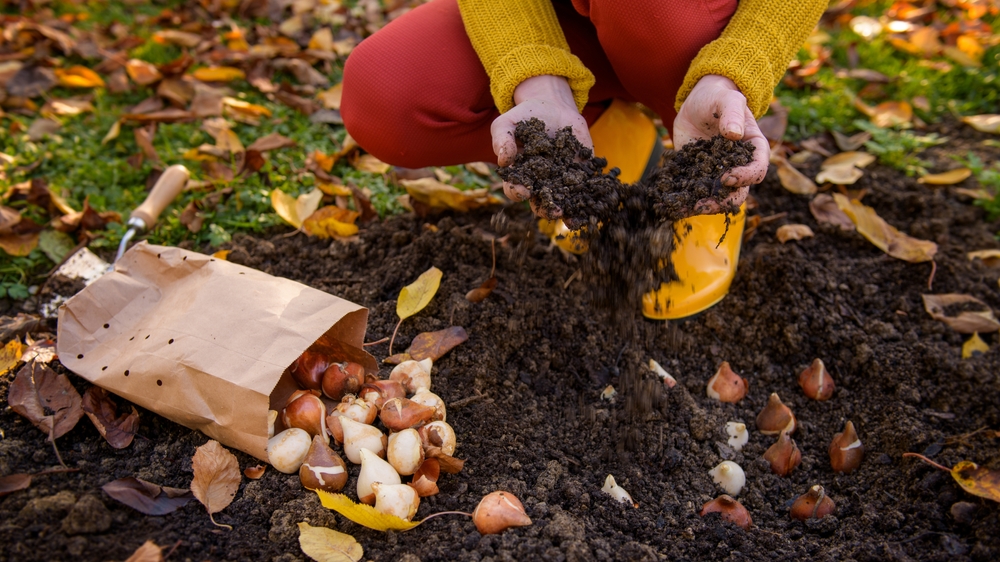
The overall success of your garden hinges significantly on the planting techniques for bulbs and perennials. By understanding the proper methods for soil preparation, planting depths, and container gardening, you can ensure the healthy growth and bloom of your bulbs and perennials.
Each of these planting techniques focuses on providing the best possible environment for your plants to grow and thrive. By following these methods, you can create a beautiful and successful garden that showcases the stunning interplay between bulbs and perennials.
Soil Preparation
Start by clearing out any weeds or debris from the planting area to prepare the soil for the optimal growth of bulbs and perennials. Dig down about 10-12 inches, breaking up any clumps and mixing in some air. If the soil is heavy, consider adding organic material to improve drainage.
A well-drained sandy loam soil, rich in organic matter, is ideal for growing bulbs and perennials. Providing necessary nutrients like nitrogen, phosphorus, and potassium is vital for their healthy growth. Testing the soil pH and amending it if needed will help create the ideal environment for your plants to flourish.
Planting Depths and Spacing
Knowing the correct planting depths and spacing for various bulbs and perennials is crucial for their growth and bloom. Most bulbs should be planted at two to three times their depth, with the pointed end facing up. For perennials, plant them at the same depth as they were in their pot to ensure their roots are at the right level. Proper planting depths and spacing allow your plants to get the nutrients and space they need to grow and bloom beautifully.
By following the appropriate planting depths and spacing guidelines, you’ll be able to create a garden that showcases the stunning interplay between bulbs and perennials. With proper care and attention, your garden will provide a spectacular display that lasts throughout the seasons.
Container Gardening
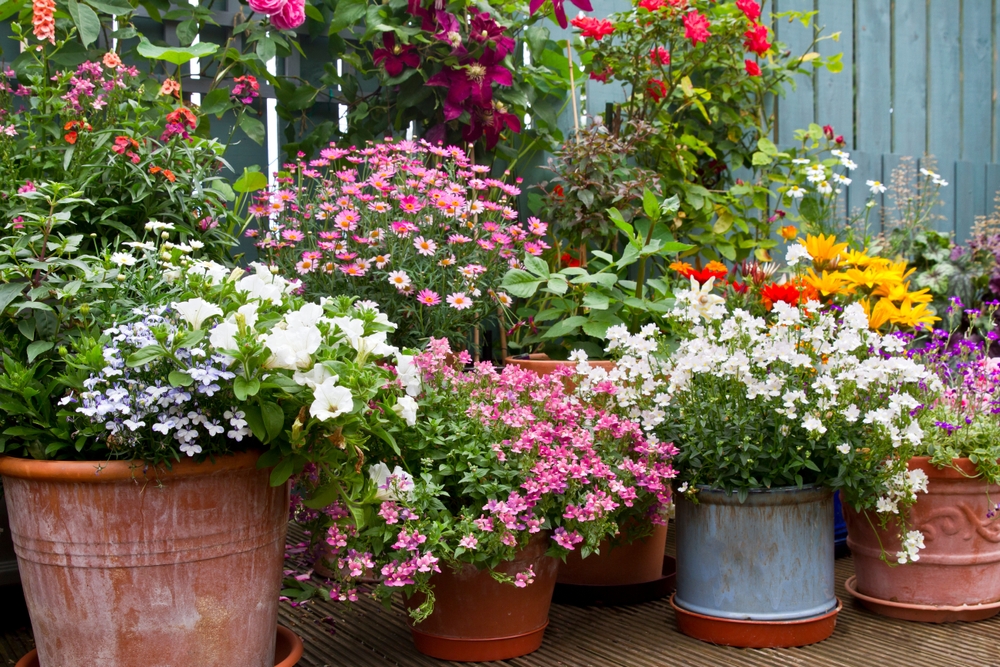
A container garden filled with bulbs and perennials is a fantastic way to introduce color and texture to your outdoor space. It’s an excellent option if you’re dealing with limited space or want to experiment with container gardening. To create a successful container garden, choose bulbs and perennials that are well-suited for container life, such as:
- Crocus tommasianus ‘Barr’s Purple’
- Narcissus bulbocodium ‘Golden Bells’
- Asiatic and Oriental lilies
- Caladium
- Begonias
- Dahlias
- Peacock Orchids
- Elephant Ears
- Calla Lilies
- Nerine
Caring for bulbs and perennials in container gardens requires proper watering, fertilization, and sunlight. Use a quality soilless growing medium or a loam-based compost with extra sand for drainage, and ensure the containers have drainage holes to prevent root rot. By following these container gardening tips, you can create a stunning arrangement of bulbs and perennials that will brighten up any outdoor space.
Caring for Your Bulb and Perennial Garden
Maintaining a healthy and vibrant display in your bulb and perennial garden requires proper care. This includes:
- Regular watering
- Fertilizing
- Pruning
- Pest control
By following these care tips, your garden will flourish and provide a stunning visual feast for you and your guests to enjoy throughout the year.
Each of these care techniques focuses on providing the best possible environment for your plants to grow and thrive. By dedicating time and effort to maintaining your garden, you can ensure the healthy growth and bloom of your bulbs and perennials, creating a beautiful and lasting display.
Watering and Fertilizing
Regular watering and fertilization are key to keeping your bulb and perennial garden healthy and vibrant. Water your plants once a week when they’re growing and flowering, making sure the water reaches the roots. Watering in the morning is recommended to allow the leaves to dry out during the day.
Fertilize your plants with a slow-release, granular fertilizer specifically designed for flower bulbs. You can also use a high-potassium liquid tomato feed to promote good flowering. By following proper watering and fertilizing practices, your bulb and perennial garden will thrive and provide a breathtaking display throughout the seasons.
Pruning and Deadheading
Pruning and deadheading play a key role in promoting new growth, producing fresh flower buds, and maintaining plant health. Deadheading involves removing spent flowers to encourage more blooms, while pruning involves cutting away unproductive or unhealthy parts of the plant.
To prune and deadhead bulb and perennial plants correctly, follow these guidelines: deadhead flowers by pinching or cutting off the flower stem below the spent flower and just above the first set of full, healthy leaves. Remove the entire flower at the neck when it has finished blooming to allow the plant to redirect its energy and promote better growth.
By properly pruning and deadheading your plants, you’ll maintain a beautiful and healthy garden.
Pest and Disease Control
Protecting your garden from pests and diseases is crucial for maintaining a healthy and thriving landscape. Common diseases in bulb and perennial gardens include:
- Botrytis blight
- Honey fungus
- Fungal leaf infections
- Cottony stem rot disease
- Mosaic virus
To manage and control pests and diseases in your bulb and perennial garden, follow these steps:
- Use insecticides and fungicides as needed.
- Adopt good gardening practices such as regularly clearing out old flowers, leaves, and debris.
- Keep an eye out for small patches of disease and take swift action to control them.
By following these steps, you can preserve the beauty and health of your garden.
Inspirational Garden Styles
Discovering different garden styles can provide inspiration for your own unique landscape. Cottage gardens, formal gardens, and wildlife-friendly gardens each offer a distinct aesthetic and purpose. By exploring these garden styles, you can find the perfect design that reflects your personality and complements your home.
Each garden style presents a unique way of combining bulbs and perennials, offering a plethora of ideas for creating a stunning outdoor space. Whether you prefer the charming informality of a cottage garden, the structured elegance of a formal garden, or the natural beauty of a wildlife-friendly garden, there’s a style to suit your tastes and preferences.
Cottage Gardens
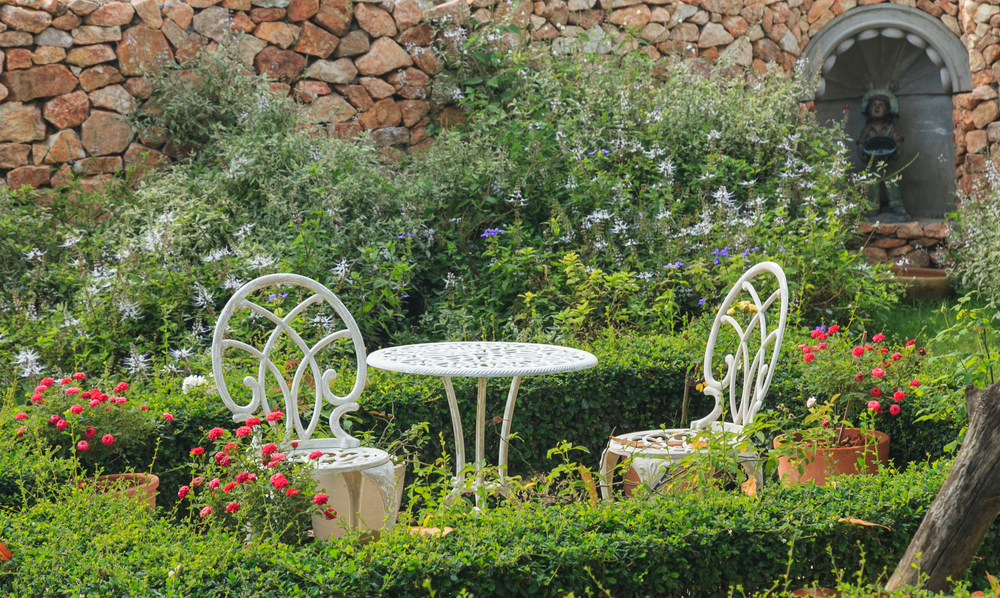
Cottage gardens are known for their informal and relaxed vibe, featuring a mix of colors, self-seeding plants, natural materials for structures like low fences or stone walls, climbing roses, groundcovers, and densely packed flower beds. To create a charming cottage garden with bulbs and perennials, consider planting a variety of flowers in clusters of different sizes and shapes, giving your garden a more natural and informal feel.
Success in a cottage garden lies in letting plants grow naturally and mixing them to create a dynamic display. With a well-planned cottage garden, you can enjoy a lively and colorful landscape that invites wildlife and provides a beautiful setting for relaxation and enjoyment.
Formal Gardens
Formal gardens are characterized by their clear structure, geometric shapes, symmetry, and repetition, often using evergreen plants, clipped hedging, and a restrained color palette for a neat and organized appearance. Designing a formal garden with bulbs and perennials involves arranging them in squares, rectangles, or circles. Consider planting them in symmetrical patterns for a balanced and harmonious display.
A successful formal garden relies on careful planning and attention to detail, focusing on structure and symmetry to create an elegant and sophisticated landscape. By incorporating bulbs and perennials in a structured and organized manner, you can create a stunning formal garden that showcases the beauty of these plants.
Wildlife-Friendly Gardens
Wildlife-friendly gardens focus on native plants that attract and support local wildlife, providing a safe and inviting habitat for pollinators and other beneficial creatures. To create a wildlife-friendly garden with bulbs and perennials, choose plants that are known to attract pollinators and beneficial insects, such as:
- Buddleia (Butterfly Bush)
- Lavender
- Sunflowers
- Goldenrod
- Borage
- Echinacea (Coneflower)
- Bee balm
In addition to selecting the right plants, ensure your garden provides shelter, water, and food sources for the wildlife it attracts. By creating a wildlife-friendly garden, you can enjoy the beauty of nature while supporting the local ecosystem and promoting biodiversity.
Summary
In this blog post, we’ve explored the beautiful world of bulbs and perennials, discussing various planting techniques, care tips, and design ideas to help you create a stunning garden that lasts all year long. Whether you’re inspired by the charm of a cottage garden, the elegance of a formal garden, or the natural beauty of a wildlife-friendly garden, the combination of bulbs and perennials offers endless possibilities for creating a breathtaking outdoor space. So go ahead, let your creativity bloom, and start designing the garden of your dreams!
Frequently Asked Questions
Can you plant bulbs around perennials?
Yes, you can plant bulbs around perennials as they fit perfectly into existing flower beds with other plants.
Can you plant flowers on top of bulbs?
Yes, you can plant flowers on top of bulbs. Winter bedding plants are an effective way to add color to your spring display before the bulbs flower.
How do you group bulbs when planting?
When planting bulbs, aim to plant in groups of at least six for the best display. Larger bulbs should be planted first at the recommended depth on their packaging and then layer smaller bulbs on top. For small bulbs like scilla siberica or chionodoxa, plant in groups of 25, while tulips and alliums should be grouped in threes or sevens. Finally, 25 to 50 bulbs may be needed for an impressive show.
Is there a right way up to plant bulbs?
When planting bulbs, the general rule is to plant them with the pointed end facing up. If it’s not clear which way is up, then try planting on their side and they’ll find the right position. In the case of tuberous plants such as begonias that don’t have a growing point, just place them flat in the soil.
What are some examples of bulb combos for layer planting?
Try planting Crocus, Hyacinth, and Tulips in one layer for a bright, spring-inspired look. Or combine Iris dwarf, Narcissus, and Tulips for a colourful combination. Allium cristophii makes a great third addition to the mix!

